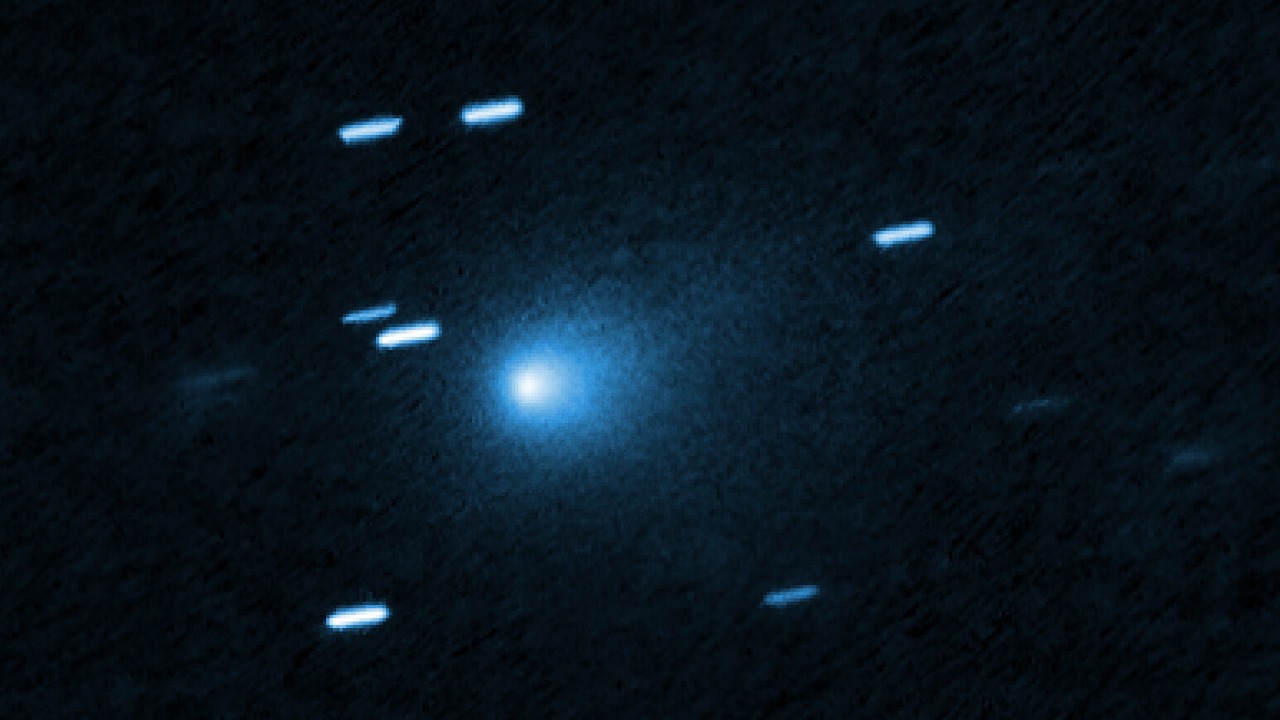
The interstellar object known as 3I/ATLAS, roughly the size of Manhattan, has recently demonstrated an unexpected non-gravitational acceleration as it swings past the Sun. This marks the first-ever observed instance of such motion in an interstellar visitor. This anomaly, coupled with the object’s color change to a bluer hue, has sparked speculation about possible signs of alien technology. These developments challenge our conventional understanding of cosmic objects and fuel debates on the existence of extraterrestrial technology.
Discovery of 3I/ATLAS
The interstellar object 3I/ATLAS was first detected as it approached our solar system. Its trajectory analysis confirmed its origin from outside our stellar neighborhood, making it the third confirmed interstellar object following ‘Oumuamua and Borisov. The object’s hyperbolic path, observed during its inbound journey, was a key factor in its classification as an interstellar object. Ground-based telescopes, including the ATLAS survey systems, played a crucial role in spotting 3I/ATLAS.
Physical Characteristics and Size
3I/ATLAS is estimated to be the size of Manhattan, a determination based on brightness and albedo measurements during its inbound journey. Initial spectral data inferred from the object highlighted irregularities that distinguish it from typical comets or asteroids. To convey the object’s massive scale, comparisons have been made to Earth-scale landmarks, emphasizing the potential impact it could have if it were on a collision course with our planet.
Observed Trajectory and Solar Flyby
The path of 3I/ATLAS as it swung past the Sun was closely monitored. Details of its closest approach, or perihelion, showed a slingshot effect. Under normal conditions, gravitational influences from the Sun and planets were modeled to predict the object’s outbound trajectory. Real-time tracking updates from observatories were crucial as 3I/ATLAS reached key milestones in its solar system transit.
Signs of Non-Gravitational Acceleration
During its flyby, 3I/ATLAS exhibited non-gravitational motion, deviating from purely orbital mechanics. This unexpected acceleration marked the first-ever instance of such a phenomenon in an interstellar object. Measurements indicated a thrust-like effect not explained by outgassing alone. A quantitative analysis of the acceleration vector linked it to the object’s velocity changes post-perihelion.
Color Changes in 3I/ATLAS
3I/ATLAS has undergone repeated color shifts, with the latest turning bluer. This suggests alterations in surface composition or activity. The spectral evolution of the object was tracked over time, from its initial hues to its recent bluer appearance, possibly tied to heating or internal processes. The color change has implications for understanding the object’s material makeup, contrasting with the stable colors observed in other interstellar visitors.
Speculations on Artificial Origins
A Harvard scientist has hypothesized that the non-gravitational acceleration and color changes in 3I/ATLAS could be signs of alien “engine” technology. This has sparked a debate on whether the motion indicates artificial propulsion. While parallels have been drawn to ‘Oumuamua’s anomalies, the evidence in this case appears to be stronger. This has raised broader questions about the possibility of technology in interstellar objects, including engineered structures or probes.
Scientific and Future Observation Efforts
Ongoing monitoring campaigns are in place to gather more data on 3I/ATLAS’s acceleration and color changes. These efforts involve international telescope networks. However, studying the object presents challenges due to its speed and fading brightness as it exits the solar system. The observations and data collected from 3I/ATLAS could have long-term implications for interstellar object research, including refined models for non-gravitational influences.
More from MorningOverview